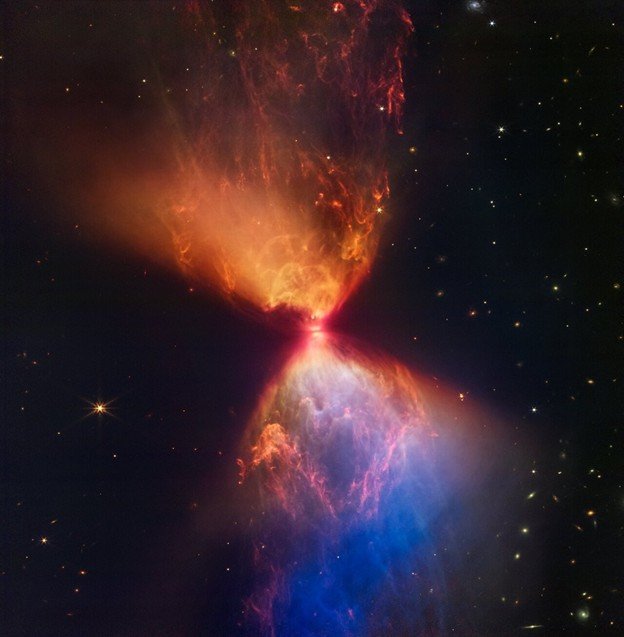Stars: Their Life Cycle and Types
The universe is a vast and dynamic tapestry, woven with the light of billions of stars that undergo a profound evolutionary journey. From their genesis in colossal clouds of interstellar gas to their dramatic and varied demise, the life and classification of stars reveal the fundamental physical processes that govern the cosmos. Understanding this stellar narrative is not merely an academic exercise; it is to comprehend the origin of the chemical elements that constitute planets and life itself. The story of a star is a story of cosmic recycling, where mass is the ultimate arbiter of destiny, dictating a star’s lifespan, its characteristics, and its final, transformative end.
The Genesis of Stars and the Main Sequence
The birthplace of stars is the interstellar medium, specifically within vast, cold, and dense regions of gas and dust known as giant molecular clouds. [1][2] These stellar nurseries, such as the well-documented Orion Nebula, can span hundreds of light-years and contain enough material to form thousands of stars. [1][3] Within these clouds, gravity acts on denser clumps, initiating a process of collapse. [4] As a fragment contracts, its gravitational potential energy is converted into heat, and a rotating, superheated ball of gas called a protostar forms at the center. [1][5] This embryonic stage, which can last for millions of years, is often shrouded by a “cocoon nebula” of gas and dust, making it observable primarily in the infrared and radio wavelengths. [2][6] The protostar continues to accrete material from a surrounding disk until the core temperature and pressure reach a critical point—approximately 10 million Kelvin—igniting nuclear fusion. [2][5] This event marks the star’s birth and its entry into the longest and most stable phase of its existence: the main sequence. [7][8] During this phase, the outward thermal pressure generated by the fusion of hydrogen into helium in the core perfectly balances the inward pull of gravity, a state known as hydrostatic equilibrium. [7][9] Roughly 90% of all stars, including our Sun, are main-sequence stars. [10]
Stellar Classification and the Hertzsprung-Russell Diagram
To make sense of the stellar population, astronomers employ a classification system that organizes stars based on their spectral characteristics, which are directly related to their surface temperature. [11] The modern Morgan-Keenan (MK) system is a refinement of the earlier Harvard system developed by Annie Jump Cannon and is sequenced O, B, A, F, G, K, M, from hottest to coolest. [12][13] O-type stars are the hottest, most massive, and most luminous, appearing blue, while M-type stars (red dwarfs) are the coolest, least massive, and most common. [14] This sequence has been expanded to include types L, T, and Y for even cooler objects like brown dwarfs. [15] A crucial tool for visualizing and understanding stellar evolution is the Hertzsprung-Russell (H-R) diagram, a scatter plot that graphs a star’s luminosity against its surface temperature. [16][17] Most stars reside along a diagonal band on this diagram known as the main sequence. [10][18] A star’s position on the main sequence is determined almost exclusively by its mass; more massive stars are hotter and more luminous, placing them in the upper-left, while less massive stars are cooler and dimmer, residing in the lower-right. [10][18] The H-R diagram is indispensable as it not only classifies stars but also illustrates their evolutionary paths as they move off the main sequence into regions of giants, supergiants, or white dwarfs. [16][19]
The Divergent Paths of Stellar Demise
A star’s evolution after it exhausts the hydrogen fuel in its core is a dramatic divergence dictated by its initial mass. [20] For low-to-intermediate-mass stars, like our Sun, the core contracts and heats up, initiating hydrogen fusion in a shell surrounding an inert helium core. [21][22] This process causes the star’s outer layers to expand enormously, transforming it into a red giant. [23] Eventually, the core becomes hot enough to ignite helium fusion in a rapid event called the helium flash, after which the star settles into a phase of core helium burning. [21] When the helium is depleted, the star enters the asymptotic giant branch phase, becoming unstable and pulsating, ultimately ejecting its outer layers to form a glowing planetary nebula. [1][23] At the center of this expanding gas shell remains the hot, dense, Earth-sized core: a white dwarf, which will spend eons slowly cooling into a black dwarf. [23][24]
In stark contrast, high-mass stars (those with more than eight times the Sun’s mass) experience a far more violent end. [25] Their immense gravity creates core temperatures and pressures high enough to fuse progressively heavier elements in a layered, onion-like structure: from helium to carbon, then oxygen, neon, silicon, and finally, iron. [26][27] The fusion of iron consumes energy rather than releasing it, abruptly halting the outward pressure. [26] Gravity then wins catastrophically, causing the core to collapse in less than a second. This implosion rebounds off the incredibly dense core, launching a powerful shockwave that tears the star apart in a core-collapse supernova. [23][26] This explosion is a primary source of cosmic chemical enrichment, forging and scattering elements heavier than iron, such as gold and uranium, across the galaxy. [27][28] The remnant left behind depends on the core’s mass: it will either be an ultra-dense neutron star or, if the core is massive enough, a black hole, an object with gravity so intense that not even light can escape. [29][30]



Leave your comment
You must be logged in to post a comment.